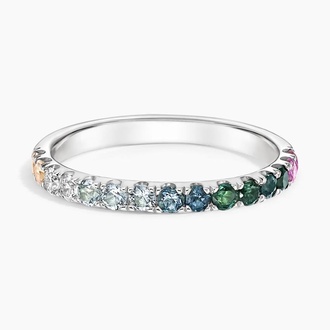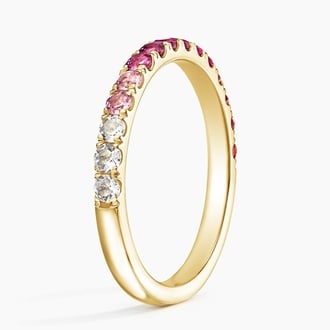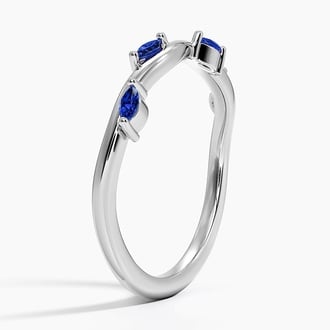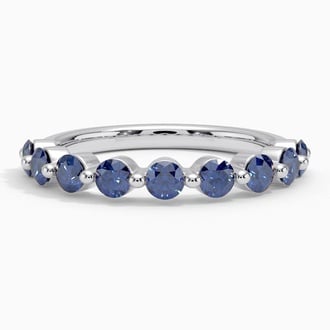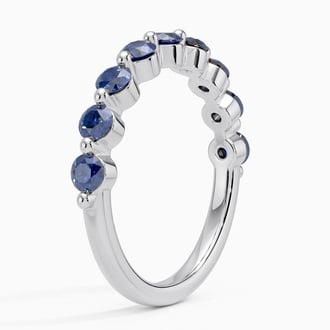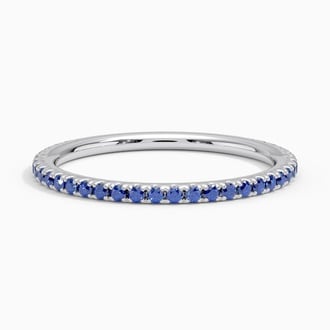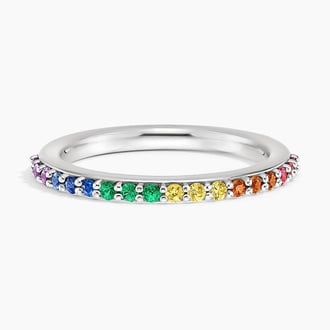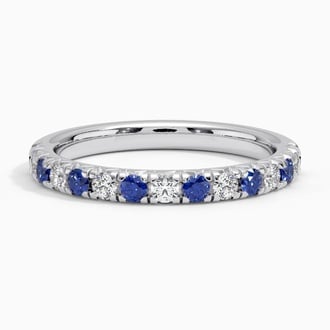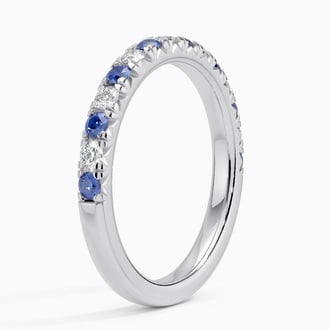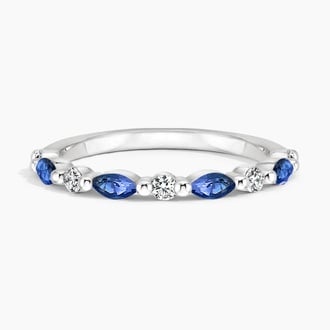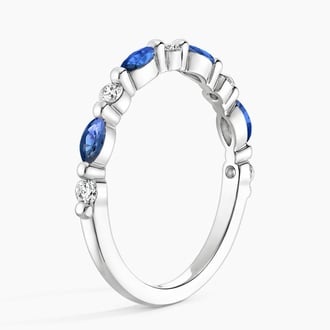Our carefully curated collection of sapphire wedding rings breathes new life – and color – into a traditionally diamond-only space. Sapphire, a precious gemstone that consists of trace elements of iron, titanium, chromium, vanadium, or magnesium, is widely considered as one of the most beautiful and alluring stones in the world. While many may only think of hues of blue in terms of sapphire wedding rings, sapphires actually come in a wide variety of colors that range from deep purple to light orange, green, pink, or teal (and everything in between).
Each Brilliant Earth sapphire wedding band is crafted with ethically and sustainably sourced gemstones hand-picked by our world class gemologists. Each distinctive design ranges in style, from traditional silhouettes to trend-forward, showstopping pieces. Choose a sapphire wedding band that represents your individual fashion sense and your colorful, one-of-a-kind love story.























